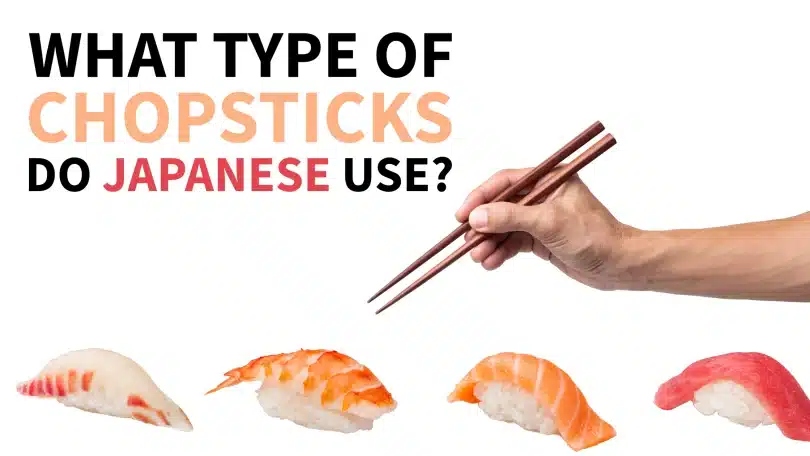In the intricate world of Japanese cuisine, every element holds significance, down to the utensils used for dining. Among these, chopsticks reign supreme as an essential tool for savoring the delicate flavors of traditional Japanese dishes. However, not all chopsticks are created equal. The Japanese chopstick, or “hashi” as it’s known in Japanese, holds a unique place in the culinary landscape. So, what type of chopsticks do Japanese use? Let’s delve into the nuances of Japanese chopsticks and explore how they differ from those in other Asian cultures.
Table of contents
Japanese Chopsticks: A Symbol of Refinement
In Japan, chopsticks are more than just eating utensils; they are a symbol of refinement and cultural heritage. Crafted from various materials such as wood, bamboo, plastic, or metal, Japanese chopsticks tend to be shorter and more tapered compared to their counterparts in China or Korea. This design reflects the Japanese emphasis on precision and delicacy in handling food.
Contrasts with Other Asian Chopsticks
Chopsticks are of course used not only in Japan but also in many Asian countries. The shape of chopsticks is adapted to each food culture.
Which type of chopsticks do you have at home?

China:
Chinese chopsticks are typically longer and thicker compared to Japanese chopsticks. They often feature blunt ends and are made from materials like wood or bamboo. Chinese chopsticks are more utilitarian in design, reflecting the emphasis on versatility and durability in Chinese cuisine.
Korea:
Korean chopsticks are unique for their metal construction, often made from stainless steel or silver. They are typically flatter and wider than Japanese chopsticks, making them suitable for picking up larger portions of food. Korean chopsticks also have a more ornate design, reflecting the importance of aesthetics in Korean culture.
What are the best type of chopsticks
The best type of chopsticks can vary depending on personal preference and the type of cuisine being enjoyed. However, many people prefer chopsticks made of materials like bamboo, wood, or stainless steel for their durability, ease of use, and sustainability. Ultimately, the best type of chopsticks is the one that feels comfortable and functional for the individual user.
The right length for you
In Japan, the standard length of chopsticks that are comfortable to hold is 22.5 cm for adult males and 21 cm for females. Even if they are not exactly the same size, an error of plus or minus two centimeters is sufficient for proper use of the chopsticks.
For children, it is a good idea to prepare chopsticks with a support like the product below.
Naming service
In Japan, people often put their names on chopsticks as gifts or memorial gifts for couples or family members.
When you travel to Japan, ask a chopstick shop to get you your own special pair of chopsticks. Or there’s an online service, too.
https://kappabashi-mikura.com/en
Japanese Chopstick Etiquette
n Japan, proper chopstick etiquette, or “chopstick manners” (hashi no manners), is essential for dining etiquette. Here are some key points to remember:
- Never Stick Chopsticks Vertically into Food: This gesture resembles a funeral ritual and is considered highly disrespectful.
- Do Not Pass Food Directly from Chopstick to Chopstick: This practice is reminiscent of a funeral custom where bones are passed between chopsticks, so it’s best avoided.
- Use the End Without Bite Marks for Serving: When sharing food, use the end of the chopsticks that hasn’t come into contact with your mouth.
- Rest Chopsticks Horizontally Across the Plate or Bowl: Placing chopsticks upright in a bowl is considered rude. Instead, lay them flat across the dish or on a chopstick rest if provided.
Experiencing Japanese Chopsticks in Action
When enjoying Japanese cuisine, the elegance and precision of Japanese chopsticks add to the dining experience. Whether delicately picking up a piece of sushi or expertly maneuvering noodles in a bowl of ramen, Japanese chopsticks enhance the sensory journey of each bite.
Personally, what I love most about Japanese chopsticks is their ergonomic design, which makes them comfortable to hold for extended periods. Additionally, their tapered tips allow for precise control, perfect for grasping even the most delicate morsels of food without causing them to slip.
In conclusion, Japanese chopsticks are not just utensils; they are symbols of cultural refinement and culinary artistry. By understanding the nuances of chopstick etiquette and appreciating the craftsmanship of Japanese chopsticks, one can truly immerse oneself in the rich tapestry of Japanese cuisine. So, the next time you sit down to enjoy a meal, remember to savor not just the flavors on your plate but also the cultural heritage embodied by your chopsticks.











